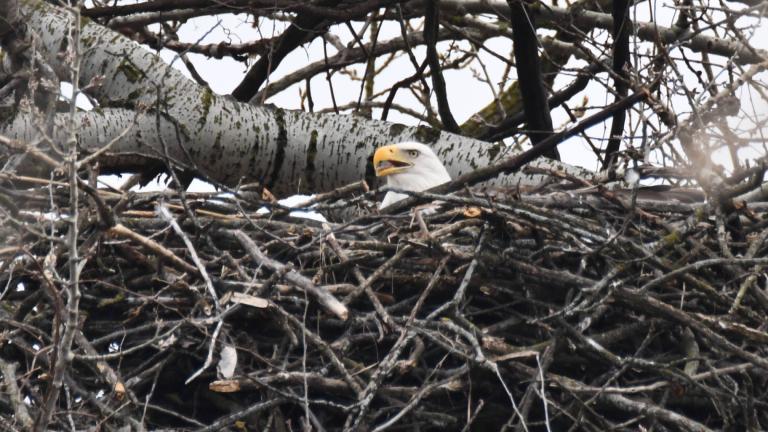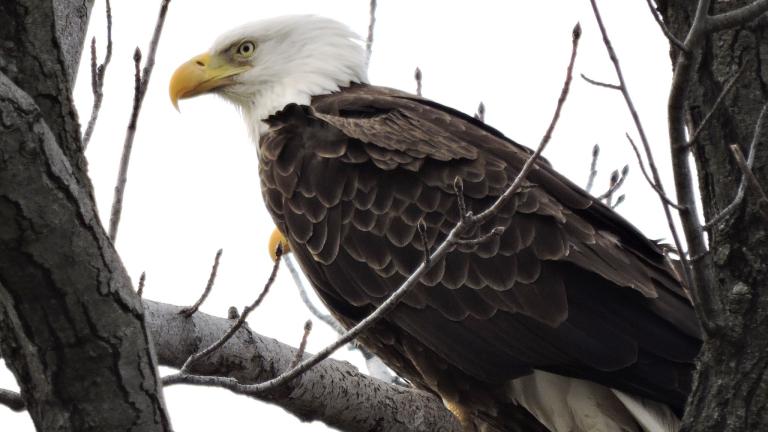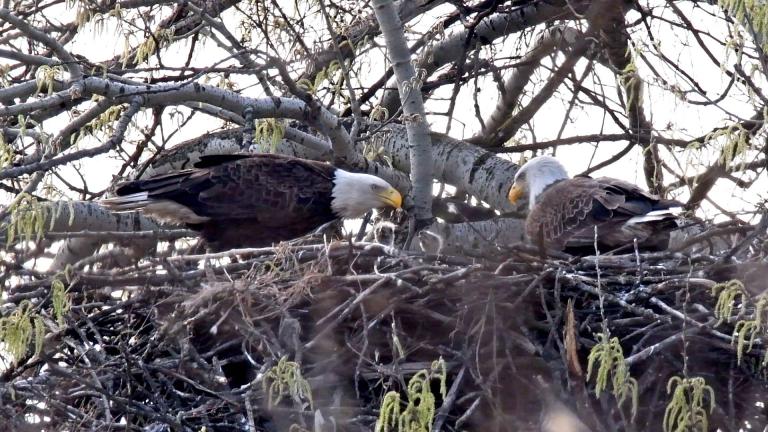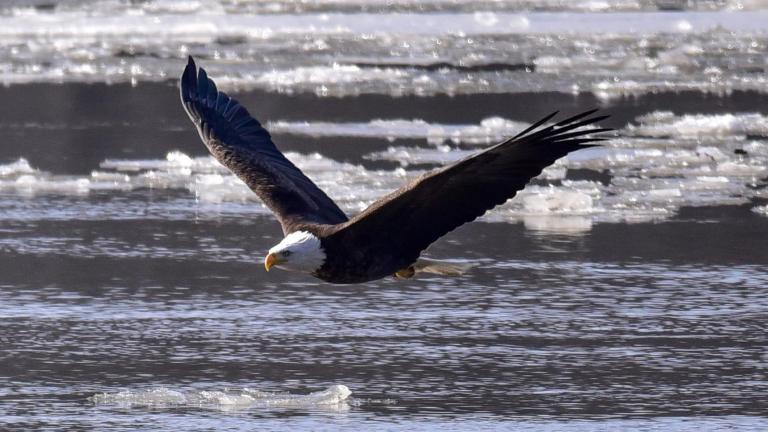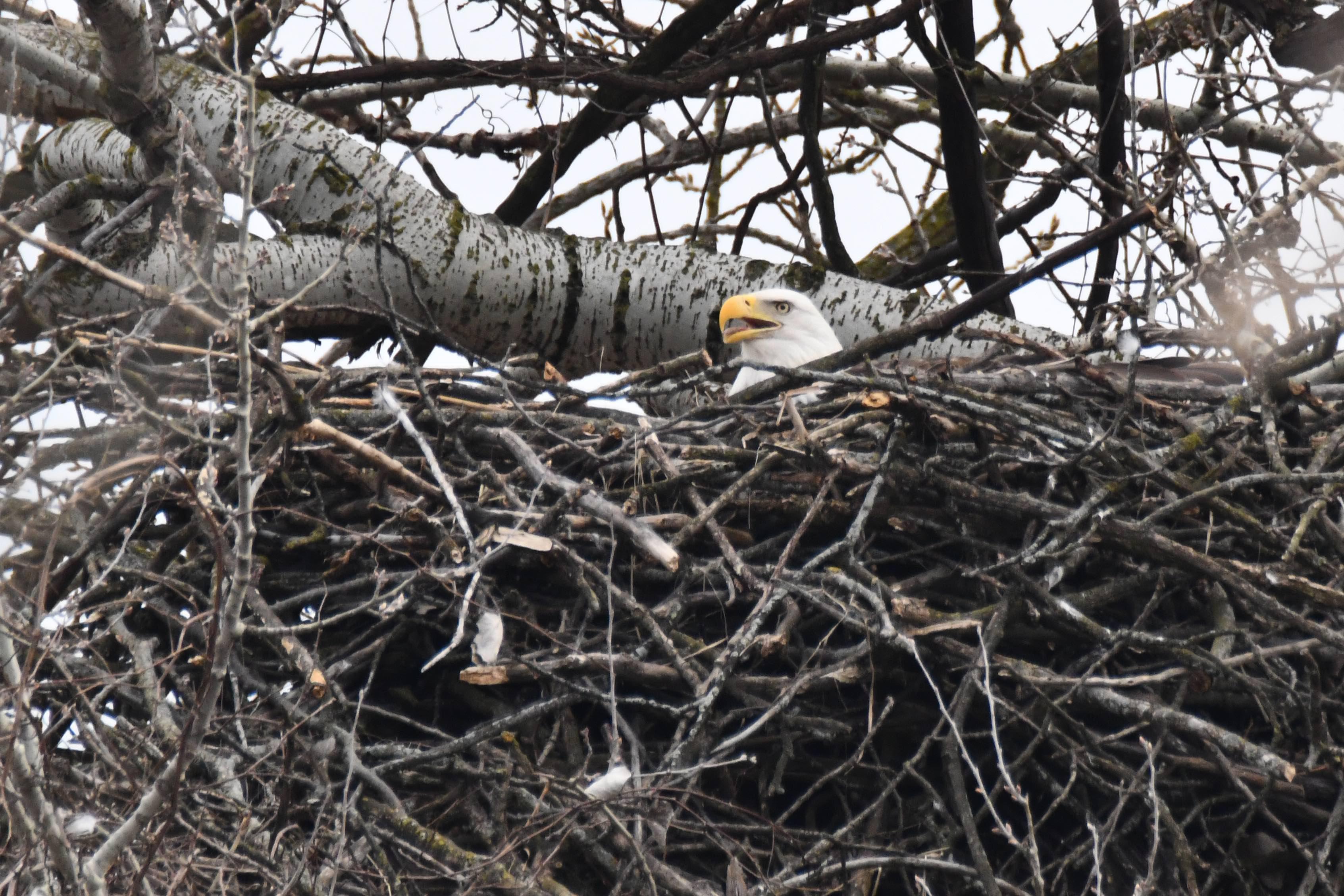 Four active eagle nests being monitored this winter in the Forest Preserve District of Will County. (Forest Preserve District of Will County / Chad Merda)
Four active eagle nests being monitored this winter in the Forest Preserve District of Will County. (Forest Preserve District of Will County / Chad Merda)
The Will County Forest Preserve District's bald eagle monitors will have their hands full in the coming weeks, as the number of active nests in the preserves has risen to four.
“This is the first time we’ve had four active nests actually on preserve property,” Joel Craig, a Will County Audubon member who is also a forest preserve volunteer, said in a statement. In prior years, one of the nests was located outside the preserves, he explained, but it collapsed last fall and the eagles chose a site within district boundaries for its replacement.
Egg incubation — which averages 35 days for eagles — has been detected at different times in the nests, so hatchlings' arrivals will be staggered. Monitors will be watching for signs of feeding activity beginning around March 23 for the first nest, and about a week later for the remaining three, Craig said.
Bald eagles typically lay one to three eggs, and the full tally of this year's breeding season won't be known until hatchlings' heads begin popping up from the nests.
So what makes Will County such a hot spot for bald eagle mating?
“Many of our preserves help protect waterways, which are important hunting grounds for these birds,” said Becky Blankenship, a wildlife ecologist with the Forest Preserve District.
All forest preserve eagle nests are monitored by staff and trusted volunteers. “And we submit all of the nest data including nest building/repairs, first date observed incubating, hatch date estimates, and number of eaglets to the U.S. Fish and Wildlife Service so they can keep tabs on the overall population,” Blankenship said.
The locations of the nests aren't revealed to the public in order to protect the birds and give them the best chance for successful nesting. Human interference could cause the eagles to abandon their nests and their eggs.
Anyone coming across an eagle's nest should maintain a distance of at least 300 feet.
Contact Patty Wetli: @pattywetli | (773) 509-5623 | [email protected]

